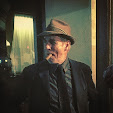
There ought to be a law.
But then if there were, I suppose there would be no such thing as acting.
Let me explain.
I’ve been thinking about smiling lately.
Everyone knows the difference between a smile and a real smile, the kind that you feel from your spine and splashes your face like a bucket of confetti. Uncontainable happiness leaking out of your face.
A smile that you can see way deep down in the eyes.
Scientists call it a zygomatic (i.e., genuine) smile.
A real smile.
What if we couldn’t fake that.
What if there was actually a law against artificially summoning one to your face; Enlisting your facial muscles in a conspiracy without the actual emotion behind it.
A law against using the Zygomaticus major and minor. (the muscles that pull up the corners of the mouth.)
This law would make illegal the willful constricting of the Orbicularis oculi, the muscles that encircle each eye and causes crinkling.
The use of the Levator labii superioris, which pulls up the corner of lip and nose would be forbidden and the Levator anguli oris, which helps elevate the angle of the mouth would be off limits.
And you could forget about your Risorius, which pulls corner of mouth to the side.
The law would insure that all your smiles were genuine.
A smile would become like a dog wagging its tail.
I am quite certain dogs don’t think:
“I better wag my tail, I want to make sure my master thinks I’m having fun.”
The tail wag is a direct expression of the inner state of the dog. The dog cannot lie. That’s why actors don’t like to work with animals. They’re too good.
Contrary to the many glum faces one sees in a day, no such law exists. Fake smiles outnumber real ones 10 to 1. Smiles can be brief twitchy affairs that are really just perfunctory tightening of the aforementioned muscles. They can be poured onto the face like syrup on a pancake or turned into defiant teeth-baring warnings of “Don’t even think about it.”
Despite this, I am glad a “Genuine Smile Only Law” has not been enacted. Here’s why: The body and the face have a sense memory. Twist them into the right position and the emotion will follow. So when we consciously smile to indicate warmth or openness or any of the other countless things a smile can represent, what we are really doing is practicing for when a real, genuine zygomatic smile comes along. And practice is always good.
I remember Phillippe Gaulier admonishing me to enjoy myself in a Buffoon workshop. And Georges Bigot dubbing me “Monsieur le Gag” (which I took as a compliment) while mining the funny in some Commedia. All my great teachers have said the same thing: people come to see a play. So play. You can be serious as death, but play.
My current director, Matthew Wiener is a strong adherent to this philosophy. He tells us that if we build a little fire of joy in our bellies backstage just before we go on and then bring that joy on to the stage with us, something thrilling happens. And he’s right. Recognizing the fundamental joy in what we do can be seen by the audience and can infect the air in a room with a giddy, unmistakable crackle.
It’s one of the hardest, most elusive qualities in live performance, and maybe the most essential.
At the top of nearly every page of my Shipwrecked! script I’ve scrawled the word “Smile.”

Even though some tragic things happen to this character I’m playing, there is an underlying joyfulness, a ribbon of hopeful enthusiasm that the whole play hinges on. If I remember to smile a little, it infects the performance like bubbles infect champagne. The air between the words gets charged with mischief.
But it all starts with a smile.
Warning
A smile is like an invitation to the party in your mouth.
Like a cradle of future giggles
Like a hammock hung between invisible trees.
Like a balloon animal filled with the helium of possibilities.
Like a welcome mat for the eyes.
A smile can also be like the grill of a Chrysler
Like a parenthesis taking a break and lying down.
Like a supine moon.
Like a ladle of teeth.
Or an upturned scythe.
A smile can also be like an anthropological dig in your face where great treasures are revealed.
Like a harbinger of risk-taking.
Like a secret agreement.
Like a fissure in the formality,
Like a crack in the ice.
Or a favorite mask.
A smile is like a suspension bridge you build between your cheeks where joyous little cars travel all day and all night on their way to fun.
Warning: many smiles are infectious.
Even to yourself.

No comments:
Post a Comment